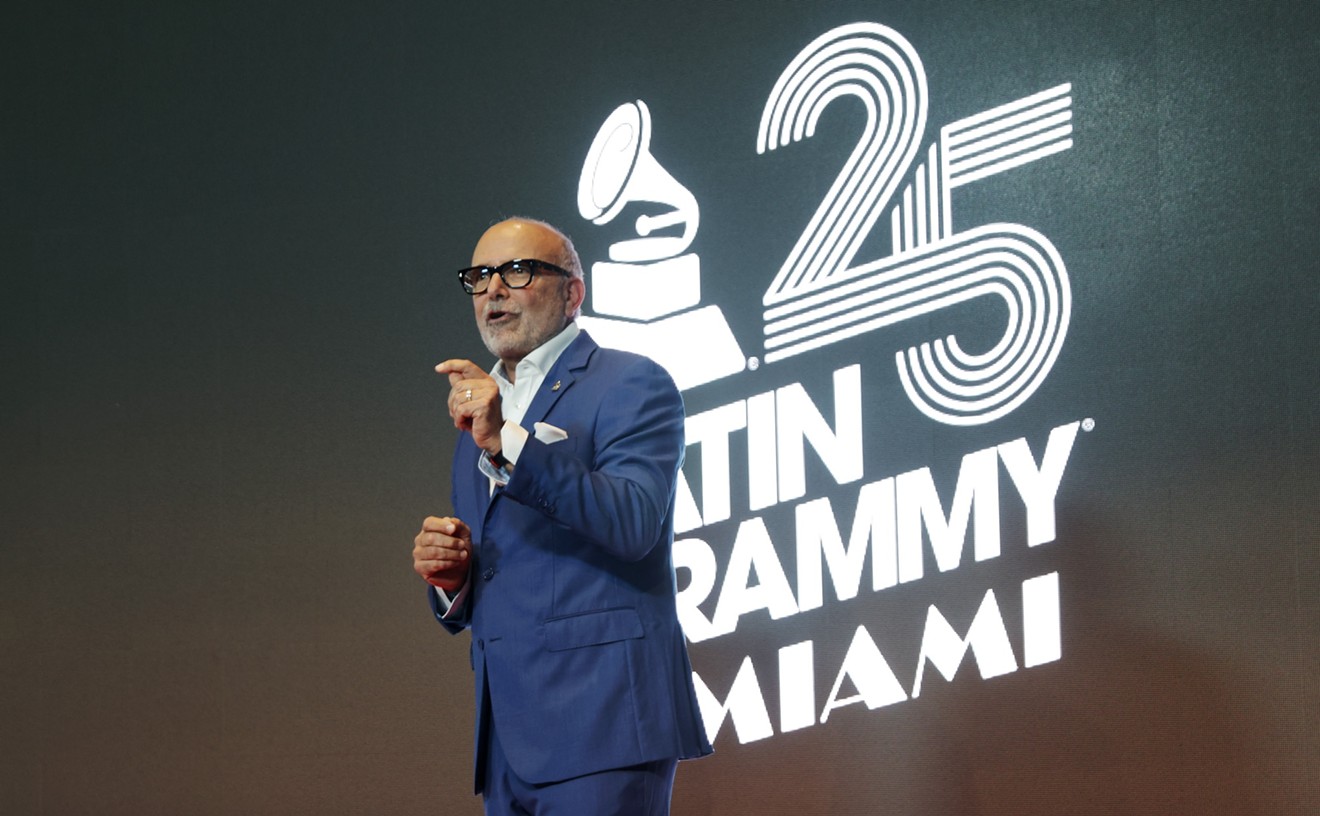Pop
(Island)
So this is the "next big thing" the music industry has been so desperately searching for? Hate to disappoint, but the U2 of Pop is emphatically still U2 -- underneath the electronic trickery, you can hear Bono's vocal idiosyncrasies, Edge's ringing guitar, Adam Clayton's prominent bass. Despite advance hype that this would be a dance album, no track is really danceable in the sense of having a strong, driving beat. Except for the techno-drenched "Mofo," there's no song that resembles the frantic, kitschy first single, "Discotheque"; the majority of the tracks lean toward slow and contemplative.
The new frontier of pop music? Well, "Staring at the Sun" sounds so much like latter-era Beatles it could have been plucked off Abbey Road, and "Gone" borrows freely from the synthesizer bands of the Seventies. Still, there's interesting stuff here, and Pop is well worth a listen. U2 and producer Flood draw from a grab bag of musical influences and twist them to suit their own personalities. There's humor, much of it self-deprecating, and there's lyricism (Bono just can't help himself; he turns "If God Will Send His Angels" into a soothing benediction), and there's darkness, especially on the bitingly apt "Miami" ("Surgery in the air/Print shirts and Southern accents"), one of the best tracks.
If you go back and listen to 1993's underappreciated Zooropa, you'll see that Pop continues a progression in the direction U2 was already heading four years ago. While this album is hardly the salvation of pop music, it's at least a pleasing collection, and it demonstrates that after two decades in the business, U2 is still nowhere near the point of creative bankruptcy.
-- Debbie Gilbert
Various Artists
Jali Kunda -- Griots of West Africa & Beyond
(Ellipses Arts)
Jali Kunda isn't an artist; it's a term that, roughly translated, means "Home of the Griots." And for the uninitiated, griots are a caste of storytelling musicians who have kept alive the culture and history of their tribes and who have presided over most ritual ceremonies for more than 800 years.
On this exquisitely recorded CD, from the innovative world music label Ellipses Arts and produced by Bill Laswell, old-world sounds are combined with contemporary explorations to offer a vivid portrait of the past, present, and future of West African griot music. As you might expect, the fifteen songs on this collection are merely an introduction to a rich centuries-old tradition. All of the songs have been shortened drastically from their original versions. But to provide a broader view, three of the songs have been recorded twice, in different countries and regions, each with its own unique take.
Most of the traditional songs have a dervish quality, sections swirling in waves over and over again. The finest griots alive today, handpicked by Laswell and Forday Musa Suso, interpret the songs on the 21-string koras (which sound like a cross between a lute and a harp), the baritone hand drums, the cello-sounding single-string nyanyer, the xylophonelike balafon, and through he nasal voices of women who carry the lyrics like swimmers struggling through waves.
With three exceptions. Laswell electrified Suso's kora and paired him with unlikely counterparts (avant-garde keyboardist and composer Philip Glass, jazz saxophonist Pharoah Sanders, and Laswell's dub squad, including Nicky Skopelitis) to show the musical viability of this tradition, taking it out of a historical context and imbuing it with new textures and warmth. The experiments work.
So that listeners can fully appreciate the tradition of the music, Ellipses has included a beautifully designed book, full of photos and text by music critic Robert Palmer and Suso himself, who gives an indispensable overview of the role of the griot.
-- Brian E. Rochlin
Gene Vincent
The Screaming End: Gene Vincent & His Blue Caps
(Razor & Tie)
If you want to disprove those who dog on rockabilly with the usual objections -- it's lyrically juvenile, it was a dead end -- you need only play for the poor fools some Eddie Cochran and Elvis Presley. But if you want to render these sorts of objections completely beside the point, then play 'em Gene Vincent. The Screaming End, a twenty-track collection that features Vincent during his 1956-57 glory days, will end the argument.
By the time Vincent's career record "Be Bop A Lula" had cracked the pop and country Top 10 in 1956, Elvis was already a star, but it was still early enough in the game that the sound and style of early rock and roll had yet to be codified, or even completely discovered. You can feel that kind of wild excitement of discovery all over these sides, in Vincent's delirious calls for the Blue Caps to "rock again," in the Caps' barely controlled abandon, and in the beat, man, the beat! On "Cat Man," the Blue Caps -- surely rockabilly's best-ever band -- whip up a noise that's so interested in rhythm to the exclusion of everything else that, for a minute, you can almost imagine it was influenced by mid-Sixties James Brown.
Back in that day, this music would've scared the bejesus out of any straight who heard it. "Race with the Devil" includes imagery that sounds like a Fifties Robert Johnson ("Me and the Devil, sitting at a stoplight"). The twang-on-fire guitar solos of Blue Cap Cliff Gallup on "Crazy Legs" and "Who Slapped John" are noisy and urgent, probably like nothing most folks had ever heard. Forty years down the road, I'm not sure that's changed.
Vincent is fascinating for all sorts of reasons. His wild, greasy hair and leather jackets would become essential pieces of the rock and roll look. In nearly perpetual pain throughout his career, he took the stage surrounded by an entourage that hid the limp he acquired in a 1955 motorcycle wreck, a condition that worsened after a 1960 car wreck that killed his friend Eddie Cochran. His success in Europe, after the American hits ended, sadly established a pattern that too many first-generation rockers would have to follow. But the real reason this set matters is simply the music itself. It's cool, man. Hear it and you'll end up screaming, "Let's rock again!"
-- David Cantwell
Pat Boone
No More Mr. Nice Guy (In A Metal Mood)
(Hip-O)
This is one of those concept albums that make me want to track down every record exec even remotely involved with its conception or green-lighting, grab them by their suit lapels and shake them, hard, all the while screaming at the top of my lungs: "WHAT IN GOD'S NAME WERE YOU THINKING?"
Heavy metal, after all, is a genre that lives and dies by its bad-ass attitude, its voltage, velocity, and emotional oomph. The very attributes, in other words, that Pat Boone has spent an interminable career eschewing. Asking him to "do" metal, therefore, is the musical equivalent of asking a eunuch to grow cojones. To make matters worse, on No More Mr. Nice Guy Boone and his producer henchmen have taken metal's daffy three-cord anthems and attempted to stretch them across full-blown jazz and orchestral arrangements. The results are predictably threadbare. The only thing thinner is Boone's creaky old baritone.
While Boone's take on the Judas Priest boomer "You've Got Another Thing Comin'" starts hopefully enough, with a weaving sax solo and saucy back-up singers, once Mr. White Bucks opens his maw the whole thing collapses into unintended hilarity. His voice is stiff, utterly devoid of luster; his attempts to stretch a note come off like failed yodeling, and his stabs at ad-libbing fall flat. (Boone's outbursts -- "Oh baby," and "Uhn!" -- radiate all the spontaneity of Mr. Rogers conducting a conversational Ebonics group.)
The finger-snapping version of the Guns N' Roses classic "Paradise City" is equally unctuous, despite the brass and flash. The salsa beat and Latin jazz flourishes of Van Halen's "Panama" are a nice touch, but then Pat has to open his mouth and get all hip on us. The only song that transcends wretchedness is the Roy Oribson/Nazareth weeper "Love Hurts." Here, our milquetoast maven shows the rare good sense to perform his cover in its original state as a ballad.
I will give Boone bonus points for his rendition of "Enter Sandman." His offering is far more menacing than anything Metallica could ever produce: To hear some poor little kid repeat quasi-religious refrains after Boone is to understand Satan in one of his most insidious guises. This is the Muzak they pipe straight into Hell's shabbiest mall.
-- Steven Almond










